A Hopi Legend
The First People of Tokpela, the First World, were safely sheltered underground as fire rained down upon the earth. Volcanoes and fire storms destroyed all that was above them until the earth, the waters, and the air itself was all elemental fire.
While this was going on, the people lived happily underground with the Ant People. Their homes were just like the people's homes on the earth-surface being destroyed. There were rooms to live in and rooms where they stored their food. There was light to see by too. The tiny bits of crystal in the sand of the anthill had absorbed the light of the sun, and using the inner vision of the center located behind the eyes they could see by its reflection very well.
Only one thing troubled them: the food had begun to run short.
It had not taken Sótuknang long to destroy the world, nor would it take him long to create another one. But it was taking a long time for the First World to cool off before a Second World could be created. That was why the food was running short.
"Do not give us so much of the food you have worked so hard to gather and store," the people said.
"You are our guests," the Ant people said, "What we have is yours also." So the Ant people continued to deprive themselves of food in order to supply their guests. Every day, they tied their belts tighter and tighter, and this is why ants today are so small around the waist.
Finally, that which had been the First World cooled off. Sótuknang purified it. Then he began to create the Second World. He changed its form completely, putting land where there was water and water where there was land so that the people upon their emergence would have nothing to remind them of the previous wicked world.
When all was ready, he came to the roof of the Ant kiva, stamped on it, and gave his call. Immediately the Chief of the Ant People went up to the opening and rolled back the núta (the straw hatch that covered the opening to the kiva). "Yung-ai! Come in! You are welcome!" he called.
Sótuknang spoke first to the Ant People. "I am thanking you for doing your part in helping to save these people. It will always be remembered, this you have done, The time will come when another world will be destroyed, and when the wicked people know their last day on earth has come, they will sit by an anthill and cry for the ants to save them. Now, having fulfilled your duty, you may go forth to this Second World and take your place as ants."
Then Sótuknang said to the people, "Make your emergence now to the Second World I have created. It is not quite as beautiful as the First World, but it is beautiful just the same. You will like it. So multiply and be happy. But remember your creator and the laws he gave you. When I hear you sing joyful praises to him I will know you are my children, and you will be close to me in your hearts."
So the people emerged to the second world. Its mane was Tokpa (Dark Midnight). Its direction was south, its color blue, its mineral was qöchásive (silver). Chiefs upon it were salvi (spruce), kwáhu (eagle), and kolíchiyaw (skunk).
It was a big land, and the people multiplied rapidly, spreading over it to all directions, even to the other side of the world. This did not matter, for they were so close together in spirit they could see and talk to each other from the center on top of the head. Because this door was still open, they felt close to Sótuknang and they sang joyful praises to the Creator, Taiowa.
They did not have the privilege of living with the animals, though, for the animals were wild and kept apart. Being separated from the animals, the people tended to their own affairs. They built homes, then villages and trails between them. They made things with their hands and stored food like the Ant People. Then they began to trade and barter with one another.
THE HOLLOW EARTH
THE ANT PEOPLE (GREYS) FROM ORION
Inca Creation myth
"Viracocha rose from Lake Titicaca (or sometimes the cave of Pacaritambo) during the time of darkness to bring forth light. He made the sun, moon, and the stars. He made mankind by breathing into stones, but his first creation were brainless giants that displeased him. So he destroyed it with a flood and made a new, better one from smaller stones. Viracocha eventually disappeared across the Pacific Ocean (by walking on the water), and never returned.
When air rushes out of them it's just like blowing a trumpet. Same process, only a lot deeper sounding.
The purpose for them doing this seems to be to create mass panic and fear. It is a powerful sign of how close the NWO are to being defeated.
..... DAVID WILCOCK
The Anthills of Orion: Ancient Star Beings of the Hopi
Who are the Ant People?
All across the American Southwest we find petroglyphs (rock carvings) or pictographs (rock paintings) depicting entities with spindly bodies, large eyes, and bulbous heads that sometimes project antennae. These eerie figures are frequently shown in a "prayer stance," their elbows and knees positioned at right angles, similar to the ant's bent legs.
Ancestral Hopi petroglyph located in northern Arizona
Do these rock drawings represent a race of Ant People? Do they actually record ancient encounters between humans and an alien species? Are the creatures truly "alien," like those of the 1947 UFO crash near Roswell, New Mexico? Or are they some crypto-biological anomaly native to our planet? If not, then are they merely psychological manifestations -- creations of the collective unconscious? Let's examine the evidence.
Linguistic Evidence
"Those that are of Orion" is the apparent meaning of the term Nephilim from Genesis 6:4 of the New English Bible. Masonic researchers Christopher Knight and Robert Lomas claim that the root Aramaic word nephÓli‚ is one name for the constellation. The Nephilim, of course, are familiar to readers of Zecharia Sitchin. This prolific scholar translates the Sumerian root NFL (not the American football league!) as "...those who were cast down upon the Earth!" The King James version calls them "giants in the earth." Just before the great flood "the sons of the gods," interpreted as either fallen angels or the Watchers, mated with "the daughters of men" to produce these giants. It may be more than a coincidence that Nephilim sounds much like the Hebrew word nemãlãh, which means ant. In this case, morphology rather than size is the primary factor.
If the Nephilim are indeed "of Orion," the Ant People could actually be those who were cast down from the skies, perhaps from Orion itself.
Because the constellation rises due east, one might think that the name Orion was derived from the word orient. In actuality, it is formed by dropping the initial "m" in the Indo-European stem morui. Astoundingly, this word means ant. Perhaps the constellation was so named because its narrow, anthropomorphic waist suggests the insect.
The Hopi term for Orion is HotÚmqam, which literally means either "to string up" (as beads on a string) or "trey." This could refer to the three stars of Orion's belt but also to the tripartite form of the ant: head, thorax, and abdomen. These shiny, bead-like sections of the ant's body may have their celestial counterpart in what the Hopi consider the most important constellation in the heavens. The appearance of Orion through the overhead hatchways of Hopi kivas (semi-subterranean prayer chambers) still synchronizes many annual sacred ceremonies.
Kiva at San Ildefonso Pueblo, New Mexico. Ancient Hopi
kivas were round like this but later became rectangular
As Above...
When Orion dominates winter skies, the ants are deep in their own "kivas" (hills). Although this seems contradictory, the zenith and the nadir are actually one shamanistic axis comprising the Underworld. Two separate realms exist in the Hopi cosmology: the surface of the earth as the site of human activity and a combined sky/underground region as the home of the spirits, in particular the kachinas. (For the Hopi a kachina is a masked spirit that can assume the form of any physical object, phenomenon, or living being.)
Both the ant mound with its dark tunnels and the kiva with its sipapuni (a hole in the floor symbolically linking it to the Underworld) embody the nether plane. This paradoxically arches upward across the skies to serve as home to the star spirits.
Figure adapted from an illustration by Petra Roeckerath,
Stories of Maasaw, A Hopi God, Ekkehart Malotki
and Michael Lomatuway'ma, University of
Nebraska Press, Lincoln, 1987
The Hopi god of death, the earth, and the Underworld is named Masau'u. Like the ants, he possesses knowledge of both the surface of the earth and the chthonic regions. He wears a mask with large open eye-holes and a large mouth. His huge, bald head resembles a summer squash, and his forehead bulges out in a ridge. His feet are long as a forearm, and his body is gray. This color is essential, since his name comes from the Hopi word maasi, meaning gray. In fact, this description from Hopi mythology is uncomfortably close to contemporary images of extraterrestrial Greys.
Masau'u is also the terrestrial equivalent of Orion, whose name, as we said, means ant. The Hopi believe that distances are insignificant to Masau'u because he can traverse the entire earth before morning comes. What better way to express OrionÃs movement from the eastern to the western horizon during the night?
The Hopi word for ant is anu. In the same language naki means friend, prayer feathers, food offerings, or sand--a nexus of concepts pertaining to this insect that sometimes flies. A combination of the two words (anu-naki, or "ant friend") may be related to SitchinÃs Anunnaki. The Babylonian sky god was also named Anu. One Sumerian cylinder seal from around 2250 B.C. shows the pantheon of primary deities wearing peaked hats. The Hopi sky god Sotuknang, closely associated with the earth god Masau'u, also wears a pointed headdress. Like their Middle Eastern counterparts, these American Indian divinities were present at the creation of the universe and continued to be instrumental in the cultureÃs development.
Anu (or Danu) was also the appellation of the Celtic mother goddess and patroness of the dead. In addition, Anu was another name for the Egyptian city of Heliopolis, where the benben stone of meteoric iron was kept. Furthermore, the Egyptian word anu meant not only products, revenues, or something brought in but also gifts, tributes, and offerings. This refers to both the ants' ability to store provisions and the reverence given to the Ant People. In any case, their influence is global.
Mythological Evidence
Ants played a crucial role in the survival of the ancient Hopi. The Ant People's great kiva provided sanctuary during both the destruction of the First World, or First Era, by fire (volcanism or asteroids) and the Second World by ice (glaciers). Only the virtuous members of the tribe following a certain cloud by day and a certain star by night were able to find the sky god Sotuknang. He elected to save these migrating "chosen people" by leading them to the Ant People for protection.Ants are portrayed as generous and industrious, offering the Hopi sustenance when supplies ran short and teaching them the merits of food storage. In fact, ants have such thin waists today, the legend goes, because they once deprived themselves of provisions. In another account of the earliest eras, the Hopi themselves are described as ants when they were "way underneath." The word underneath refers to both the Ant Kiva and the subterranean First and Second Worlds. The previous Third World destroyed by a flood is also conceptualized as being below ground, whereas our present Fourth World is on the Earth's surface.
According to a rather brutal Hopi myth of "Why the Ants Are So Thin," many ants were living east of Toko'navi, or Navaho Mountain near the Arizona/Utah border. These insects are described not in the allegorical manner of an Aesop fable but in an almost humanoid way. During a Kachina Society initiation, two ants had dressed up as fierce, giant Hu kachinas and flogged the ant children so hard that they were almost cut through in the middle of their bodies, hence their slenderness. Is this yet another reference to "giants in the earth?"
Ants are also associated with either warfare or hunting. The Hopi believe that both traits are related to Orion in particular and stars in general. This tribe also connects black ants with witchcraft. The Hopi word TokoÃanu (similar to the mountain's name) literally means flesh ant, the large dark red ant with a painful sting. On the other hand, the Red Ant Society of the Zuni, a tribe that lives near the Hopi, is associated with healing.
In Mesoamerica the Maya, who share many cultural traits with the Hopi, tell legends of ant-like men building stone cities and roads during the First Creation (World). These peculiar beings possessed magical powers and could summon stones into proper architectural positions by just whistling.
Archaeologist J. Eric S. Thompson writes: "Zayamuincob can be translated as 'the twisted men' or 'the disjointed men,' suggesting a connection with 'hunchback.' The word may also be connected with zay, 'ant,' for there is also a Yucatec [Yucatan Maya] tradition of an ancient race called chac zay uincob, 'red ant men.' They were industrious like the ants which take out the red earth and make straight roads through the forest."
The reference to hunchback reminds us of Koko Pilau (Kokopelli), the humpback flute player. This is the ubiquitous, insect-like fertility figure of Southwest petroglyphs.
Kokopelli petroglyph at Homolovi State Park near Winslow, Arizona
Celestial Anthills
Each February the Hopi perform the Bean Dance inside their kivas. The fires are kept continuously ablaze, turning these underground structures into superb hot houses. This ritual may commemorate a time when the Ant People taught the Hopi how to sprout beans inside caverns in order to survive. The Hu kachinas previously mentioned are an integral part of this ceremony to initiate children into the Kachina Society.Ants resonate deep in our psyches as archetypal denizens of dual worlds: the earth plane and the Underworld. Both linguistic and mythological evidence indicates, however, that the image of ant-like anthropoids is more than a psychological reaction to the tiny Formicidae of the natural world. Why else would the mass media consistently give ETs the characteristics of bugs? Unlike the vague phantasms of dreams, Ant People appear terrifyingly real.
If these creepy creatures are an extinct or isolated terrestrial species like Big Foot or the Loch Ness Monster, we have yet to uncover any fossil or skeletal evidence of their past existence.
Were the Ant People (nem‚l‚h) actually the progeny (called Nephilim) of women who mated with rebel angels? Did an emissary from Orion, whose name means ant, come to Arizona in order to become Masau'u, the ant-like god of the Hopi? Were the Ant People willing to save the virtuous humans from two different natural cataclysms because the former saw the genetic reflection of themselves in the latter? Were the kiva-like caves in which the Hopi found refuge really the anthills of ancient star beings? These questions may in the end be unanswerable. Nevertheless, the implications keep us intrigued.
Petroglyph at Cottonwood Creek Ruin near Homolovi State Park

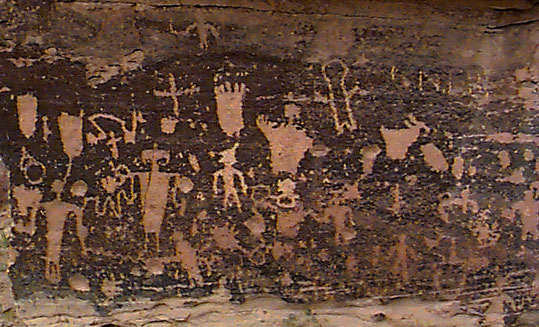
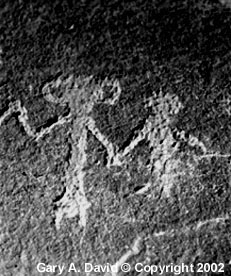
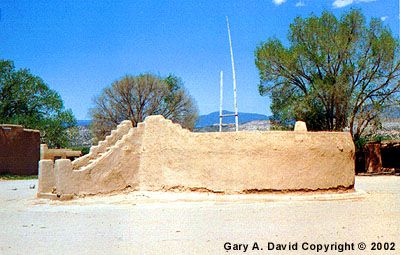
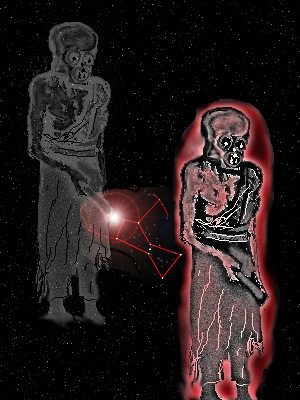
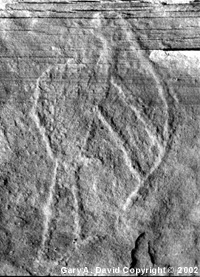
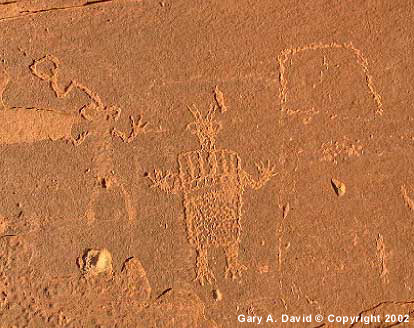
Check out the underground city in Turkey. Derinkuyu.
ReplyDeleteThe ant people or greys are not fallen angels. This is a lie that has been perpetrated so people will think they are evil. They are not evil but are completely peaceful and do live inside the earth. Why is something like this so far fetched for modern humans to believe? Instead they paint them as demonic and evil entities based on Christian dogmatic beliefs that are evil in their ideology and flawed to begin with. We have all been worshiping the same god and pretty soon we will all be united as one people through great strife and great suffering.
ReplyDeleteHumanity is the fallen race as the earth has been destroyed many times before due to our fallen stature from grace. The only demons that exist are the demons we make come to life through our own demi-god like powers. Remove the demons in your past and start to live again knowing that we are all one and are all from one god.